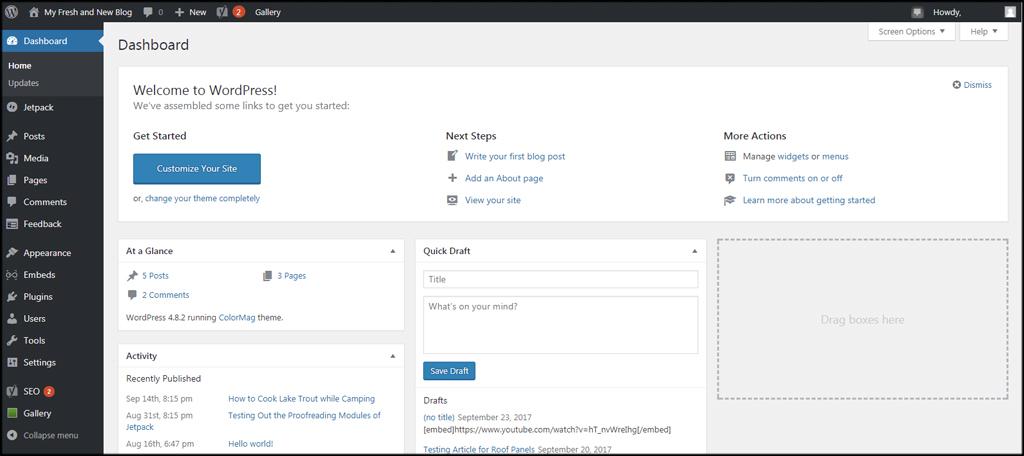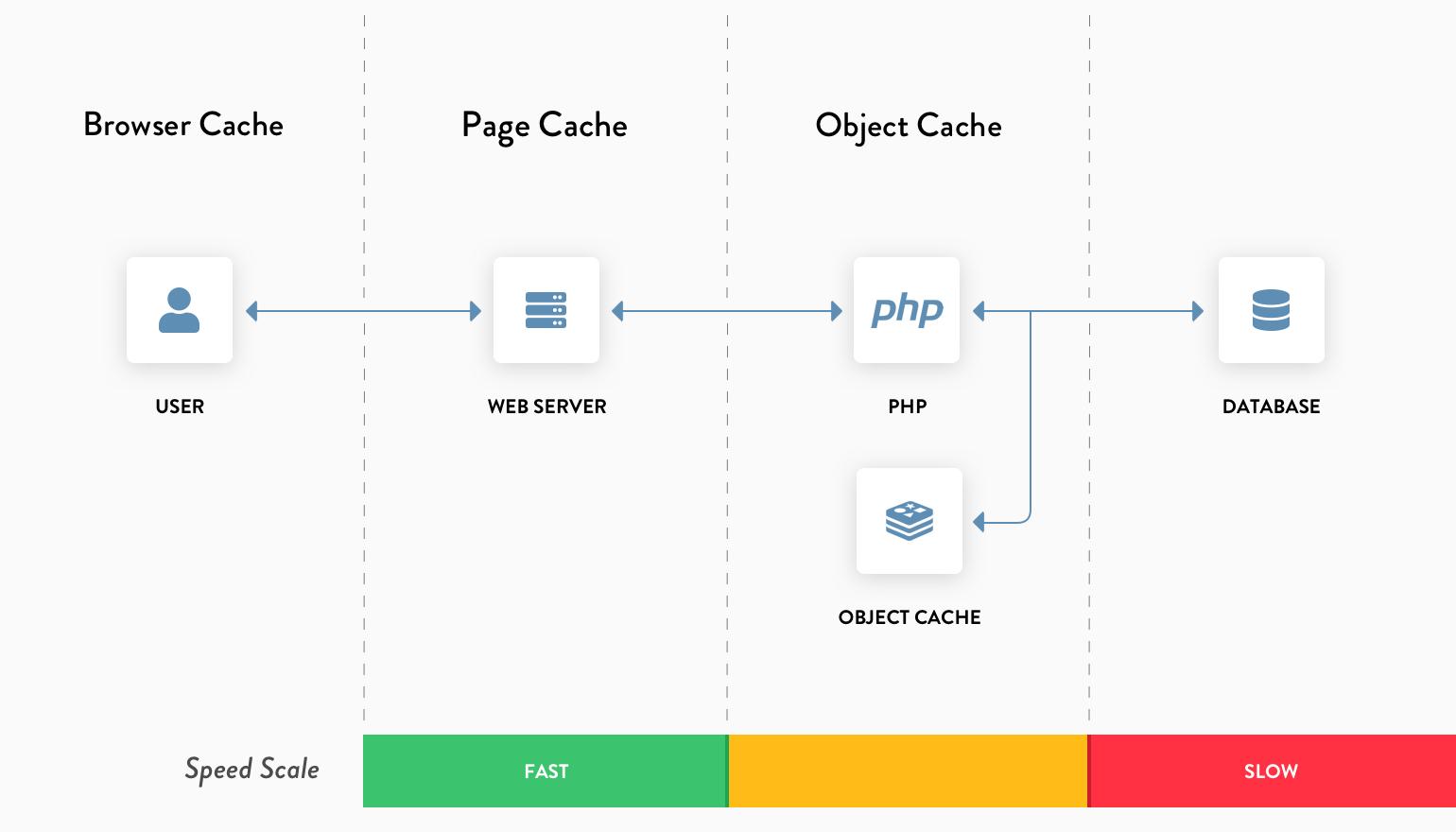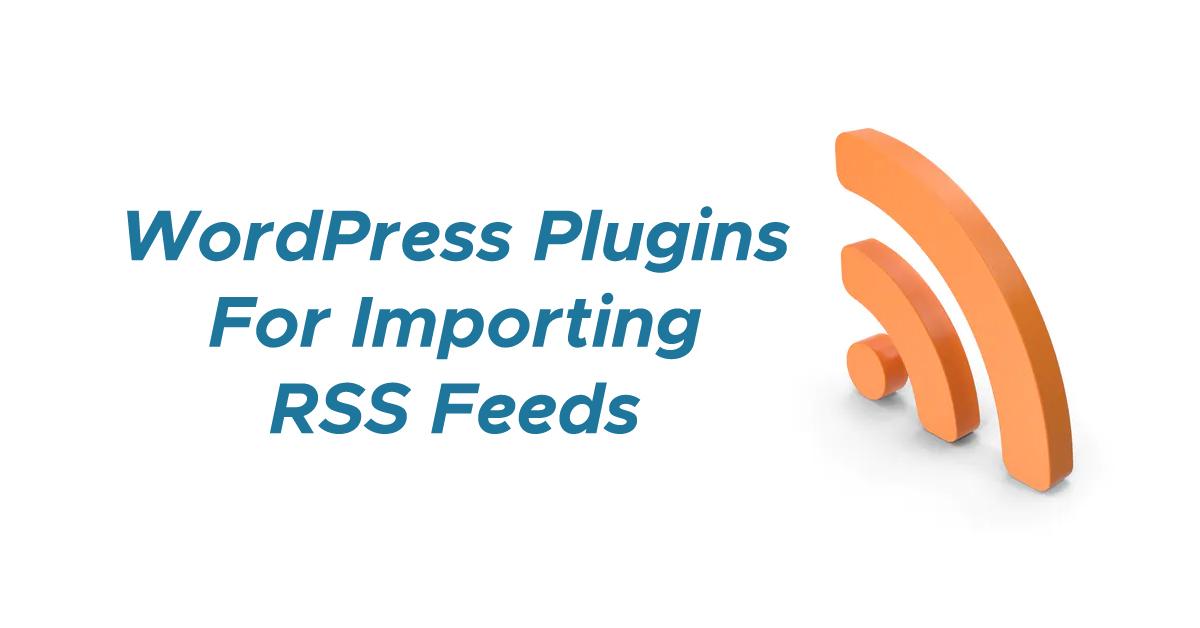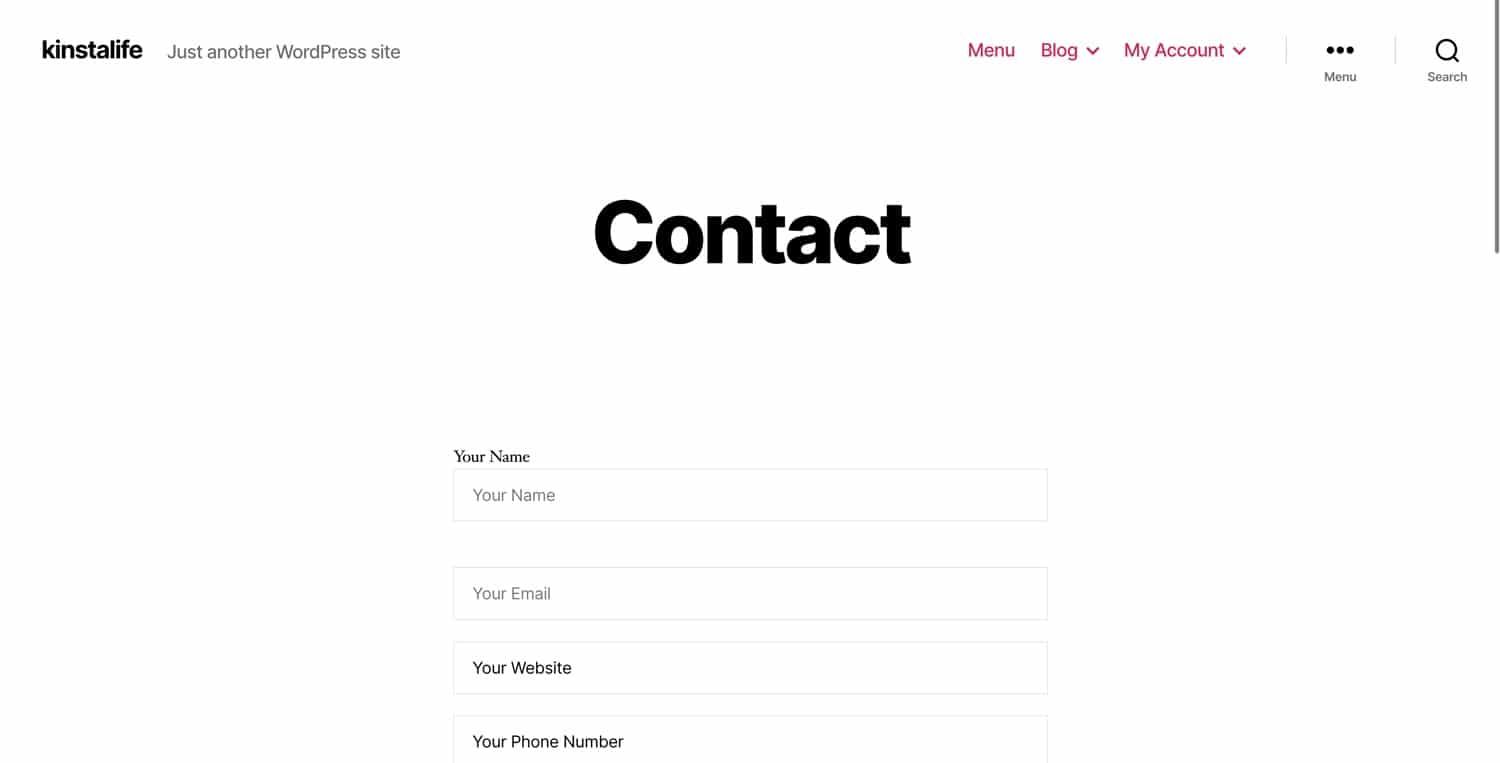
Are you tired of receiving frantic emails from your website visitors, wondering why their messages through your Contact Form 7 aren’t making it to your inbox? You’re not alone! Many users have faced this frustrating issue, and it can feel like a black hole where valuable inquiries simply vanish. But don’t worry—2025 has brought us some fresh insights and solutions that can turn your contact form woes into smooth sailing. In this article, we’ll explore the common reasons why Contact Form 7 might not be sending emails and provide you with step-by-step fixes that even the most tech-challenged among us can handle. Whether you’re a seasoned developer or just starting out, we’ve got you covered. Let’s dive in and get your contact forms working seamlessly again!
Understanding the Common Reasons for Email Delivery Issues in Contact Form 7
Have you ever experienced the frustration of submitting a contact form, only to wonder why you never received the email? This is a common issue many users face when using Contact Form 7, and understanding the underlying causes can help you troubleshoot effectively. Let’s dive into some of the most common reasons why emails may not be delivered.
1. Incorrect Email Settings
One of the primary reasons for email delivery issues lies in incorrect email settings. Check the following:
- Recipient Email Address: Ensure that the email address is spelled correctly.
- From Email Address: This should match the domain of your website to avoid being flagged as spam.
- Mail Tags: Verify that you’ve used the correct mail tags in the email body.
2. Hosting Provider Restrictions
Some hosting providers impose restrictions on email sending to prevent spam. If you’re using a shared hosting service, you might hit a limit on the number of emails that can be sent per hour. Consider:
- Contacting Your Hosting Provider: Ask if there are any specific limitations or configurations required.
- Upgrading Your Plan: If your needs exceed your current plan, a higher tier may offer better options.
3. Spam Filters and Firewall Settings
Sometimes, emails sent from your site might be flagged as spam. This can occur due to:
- Content of the Email: Avoid using spammy words or phrases.
- Domain Reputation: New domains or those with a poor reputation may struggle with deliverability.
- Firewall Configurations: Ensure that your firewall isn’t blocking outgoing emails.
4. Conflict with Other Plugins
Plugin conflicts can also hinder email functionality. If you have multiple plugins that deal with forms or emails, it’s worth checking:
- Temporarily Disabling Other Plugins: See if the issue persists.
- Updating Plugins and Themes: Outdated versions can lead to compatibility issues.
5. Use of SMTP for Email Delivery
To enhance email deliverability, consider using SMTP (Simple Mail Transfer Protocol). This method ensures that your emails are sent through a dedicated server, improving the chances that they’ll be received. Here’s a quick overview of popular SMTP plugins:
| Plugin Name | Features |
|---|---|
| WP Mail SMTP | Easy setup, multiple mailers, detailed logging. |
| Easy WP SMTP | Simple configuration, supports Gmail, SMTP authentication. |
| Post SMTP Mailer | Powerful debugging, email routing, and more. |
By exploring these areas, you can effectively identify and resolve email delivery issues with Contact Form 7, ensuring that your messages reach their intended recipients. Remember, taking a proactive approach to email settings can save you from future headaches!
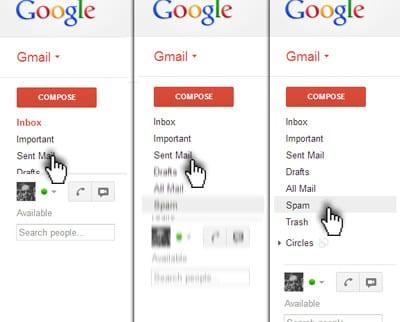
Checking Your Spam Folder: A Crucial First Step
When troubleshooting issues with Contact Form 7 not sending emails, one of the simplest yet often overlooked steps is checking your spam folder. It’s easy to dismiss this as a minor detail, but many users have discovered that crucial emails end up here due to filters and settings that categorize messages based on perceived importance.
Start by accessing your email account and navigating to the spam or junk folder. Here’s what to look for:
- Sender Address: Check if the emails are coming from the address you expect (usually your website’s domain).
- Subject Line: Look for the subject lines that match your form submissions.
- Date and Time: Verify the timestamps to see if they correspond with your submissions.
If you find the emails in your spam folder, it’s important to take immediate action. Most email providers allow you to mark messages as “Not Spam,” which helps train the filter to recognize these emails as legitimate in the future. By doing this, you not only resolve your current issue but also prevent future messages from being misclassified.
In addition to marking them as safe, consider adding the sender address to your contacts. This simple step can greatly improve the chances of future emails landing in your inbox instead of the spam folder. Furthermore, some email providers offer settings to create rules or filters that automatically direct emails from specific addresses into your inbox.
It’s also worth checking the settings of your email client. Some clients and services have stringent spam detection algorithms that may inadvertently filter out important emails. Look into the configurations to see if adjustments can be made to reduce the likelihood of this happening.
if you consistently find emails in the spam folder, consider reaching out to your hosting provider or email service for additional guidance. They might be able to assist with improving the deliverability of your emails, ensuring that your Contact Form 7 submissions always reach you in a timely manner.

Ensuring Your Hosting Environment Supports Email Sending
When it comes to using Contact Form 7, ensuring that your hosting environment is conducive to email sending is crucial. If your forms aren’t delivering emails, the issue might lie in your hosting setup. Here are a few key factors to consider:
- SMTP Server Configuration: Make sure you’re using a reliable SMTP server. This could be your web host’s server or an external service like Gmail or SendGrid. Configuring SMTP properly can significantly improve email delivery rates.
- PHP Mail Function: While most hosting providers support PHP’s mail function, some configurations might block it. Check with your host to ensure this function is enabled.
- Firewall Settings: Sometimes, firewall settings can prevent emails from being sent. Ensure your hosting provider allows outbound connections on the port your SMTP server uses (commonly port 587 or 465).
To verify if your hosting environment supports email sending, conducting a simple test is beneficial. Here’s how you can do it:
- Install a plugin like WP Mail Logging to track outgoing emails.
- Submit a test form using Contact Form 7.
- Check the logs to see if the email was processed.
If you notice that emails aren’t being sent, consider checking your hosting settings. Below is a simple comparison of common hosting types and their email capabilities:
| Hosting Type | Email Support | Recommended Actions |
|---|---|---|
| Shared Hosting | Varies by provider | Contact support to confirm settings |
| VPS Hosting | Usually supported | Configure your own SMTP |
| Managed WordPress Hosting | Often includes SMTP | Check their email handling policy |
Another aspect to examine is your domain’s DNS settings. Ensure that your domain’s SPF (Sender Policy Framework) records are correctly set up. This helps prevent your emails from being marked as spam. Here are steps to check your DNS settings:
- Log into your domain registrar’s control panel.
- Navigate to the DNS management section.
- Look for SPF records and ensure they include your mail server’s IP address.
Lastly, consider using a dedicated email delivery service if you continue to have issues. These services are designed to improve deliverability and ensure that your emails reach the inbox rather than being relegated to spam folders. Popular options include:
- SendinBlue
- Mailgun
- Amazon SES
By carefully assessing your hosting environment and making the necessary adjustments, you can optimize your setup for successful email sending through Contact Form 7. Remember, a reliable email delivery system is crucial for effective communication with your audience!

Configuring SMTP Settings for Reliable Email Delivery
When it comes to ensuring that your emails sent through Contact Form 7 reach their intended recipients, configuring SMTP settings is crucial. By default, WordPress uses the PHP mail function, which often leads to emails being marked as spam or simply not delivered. Switching to SMTP can greatly enhance your email reliability.
To get started, you’ll need to choose an SMTP provider. Some popular options include:
- SMTP.com – Known for its high deliverability rates.
- SendGrid – Offers a robust API for email sending.
- Mailgun - Suitable for developers looking for advanced analytics.
- Amazon SES – A cost-effective solution for bulk emails.
Once you’ve selected an SMTP provider, you’ll need to gather your SMTP credentials. This typically includes:
- SMTP Host: The address of your SMTP server.
- SMTP Port: Commonly 587 for TLS or 465 for SSL.
- Username: Your email address or account username.
- Password: The password associated with your email account.
After collecting your SMTP information, install and activate an SMTP plugin, such as WP Mail SMTP, on your WordPress site. Once activated, navigate to the plugin settings and input your SMTP details. Here’s a quick checklist of what to configure:
| Setting | Example Value |
|---|---|
| SMTP Host | smtp.example.com |
| SMTP Port | 587 |
| Encryption | TLS |
| Authentication | Yes |
| Username | [email protected] |
| Password | Your_Secure_Password |
After entering this information, save your settings and perform a test email to verify that everything is functioning as intended. If you receive the test email successfully, it’s a good sign that your SMTP configuration is correct. If not, double-check your SMTP credentials and settings.
In addition to the primary SMTP settings, consider configuring additional options such as:
- From Email: This should be the same address as your SMTP username to avoid discrepancies.
- From Name: The name that recipients will see when they receive your email.
- Reply-To Address: Useful if you want recipients to reply to a different email address.
By taking the time to properly configure your SMTP settings, you’ll not only enhance the reliability of your email delivery but also improve your overall communication with users. This way, you can focus on what truly matters—growing your business and engaging with your audience.
Using a Plugin to Enhance Contact Form 7 Functionality
When dealing with Contact Form 7, many users find that the default setup doesn’t quite meet their needs. Fortunately, various plugins can significantly enhance its functionality, making your contact forms more versatile and user-friendly. Here’s a look at how you can expand what Contact Form 7 can do for you.
One highly recommended plugin is Contact Form 7 – Dynamic Text Extension. This tool allows you to create dynamic fields that can change based on user input or other criteria. Imagine a form that adjusts in real-time! It’s perfect for scenarios where you need to personalize the user experience, such as pre-filling fields based on previous selections.
Another essential plugin is the Contact Form 7 – Honeypot. This tool adds a simple anti-spam feature that helps keep your inbox clear of unwanted submissions. By using a hidden field that legitimate users won’t fill out, you can effectively reduce spam without annoying captchas. Pairing this with your existing forms means more genuine inquiries reach your inbox.
For those needing advanced features, look into the Contact Form 7 – Mailchimp Integration. This plugin allows you to connect your forms directly with your Mailchimp account. You can automatically subscribe users to your mailing list when they submit your contact form. This seamless integration encourages user engagement and helps grow your email list effortlessly.
Here’s a quick comparison table of some popular plugins that can enhance Contact Form 7:
| Plugin Name | Key Feature | Best For |
|---|---|---|
| Dynamic Text Extension | Real-time dynamic fields | Personalized user experiences |
| Honeypot | Spam protection without captchas | Reducing spam submissions |
| Mailchimp Integration | Automated email list subscriptions | Email marketing integration |
Don’t overlook the potential of Contact Form 7 – PayPal & Stripe Add-on. If your business involves transactions, integrating payment options directly into your forms can streamline the process for your customers. This feature allows users to make payments seamlessly, without leaving your site, which can improve conversion rates.
consider the Contact Form 7 – Conditional Fields plugin. This add-on enables you to show or hide fields based on user selections, making your forms intuitive and interactive. No more overwhelming users with too many options at once; instead, guide them through the process based on their specific needs.
By using these plugins, you’re not just fixing email issues; you’re transforming your contact form into a powerful tool that enhances user interaction, drives engagement, and improves overall satisfaction. Whether you’re looking to personalize the experience, reduce spam, or facilitate transactions, these enhancements will take your Contact Form 7 to the next level.

Troubleshooting Conflicts with Other Plugins or Themes
If your Contact Form 7 isn’t sending emails, it could be due to conflicts with other plugins or themes. Here’s how to diagnose and resolve these issues effectively.
First, deactivate all plugins except for Contact Form 7. To do this, navigate to the WordPress dashboard, go to Plugins, and select Installed Plugins. Deactivate each plugin one at a time and then test the contact form after each deactivation. If the form starts working, you’ve identified a conflicting plugin.
Next, consider your theme. Temporarily switch to a default theme, such as Twenty Twenty-One. Go to Appearance > Themes and activate a default theme. Test if the contact form can send emails now. If it does, the issue likely lies within your original theme’s code.
In addition to checking plugins and themes, ensure that your WordPress version is up to date. An outdated version can cause compatibility issues. Go to Dashboard > Updates to make sure everything is current.
Should the issue persist, look for JavaScript errors. Open your browser’s console (usually via F12 or right-click and select Inspect) and check the console tab for any red error messages. JavaScript errors can interrupt the form’s functionality, often leading to email sending failures.
You might also want to investigate any security or caching plugins you have installed. These can sometimes block outgoing emails or scripts from functioning properly. Temporarily disable these plugins and see if that resolves the issue.
Consider using the following troubleshooting checklist:
| Step | Action | Status |
|---|---|---|
| 1 | Deactivate all plugins | Check functionality |
| 2 | Switch to a default theme | Test form |
| 3 | Update WordPress | Ensure latest version |
| 4 | Inspect for JavaScript errors | Review console |
| 5 | Disable security/caching plugins | Test again |
After making these adjustments, if the contact form still isn’t sending emails, consider reaching out to the support forums for both Contact Form 7 and any conflicting plugin or theme developers. They can provide more specialized guidance for your particular situation.
Testing Email Deliverability with Third-Party Tools
Testing your email deliverability is crucial, especially when you’re relying on Contact Form 7 to send important messages. If your emails aren’t reaching your audience, it can lead to missed opportunities and frustrated users. Utilizing third-party tools can give you insights into the health of your email setup and help diagnose any issues.
Here are some popular tools that can assist you in testing your email deliverability:
- Mail Tester – A simple yet powerful tool that analyzes your email setup and provides a score based on various criteria, including SPF, DKIM, and blacklist status.
- GlockApps – This tool lets you see where your emails end up—whether they land in the inbox, spam, or promotions folder, giving you a clearer picture of deliverability.
- Sender Score – This tool offers insights into your IP reputation, helping you understand how email clients perceive your sending practices.
- MXToolbox – With a suite of tools to test Email Exchange and DNS records, MXToolbox is invaluable for diagnosing issues with your email configuration.
When using these tools, consider the following steps to ensure accurate results:
- Test with different email providers to see how your emails perform across platforms like Gmail, Yahoo, and Outlook.
- Check your SPF and DKIM records to ensure they are correctly configured. These records authenticate your emails and improve deliverability.
- Review any feedback on blacklisting. If your domain or IP is listed, you may need to take steps to rectify the situation.
Additionally, you can set up a test email account and send various forms through your Contact Form 7 to see how they are delivered. Keep track of:
| Email Provider | Delivery Status | Comments |
|---|---|---|
| Gmail | Delivered | Inbox |
| Yahoo | Delivered | Spam |
| Outlook | Not Delivered | Check SPF/DKIM |
By continuously monitoring your email performance with these tools, you’ll be able to identify patterns and optimize your Contact Form 7 setup. Remember, a proactive approach to email deliverability not only enhances your communication but also boosts user satisfaction and engagement.

Updating WordPress, Themes, and Plugins for Optimal Performance
Keeping your WordPress site running smoothly is essential, especially if you rely on plugins like Contact Form 7 for managing customer inquiries. Regularly updating WordPress, themes, and plugins can prevent compatibility issues and improve performance. Here’s how to ensure your site remains in optimal condition:
Why Updates Matter
Each update brings improvements, security patches, and new features. Ignoring them can lead to:
- Increased vulnerability to hacking
- Compatibility issues with other plugins or themes
- Performance lags or site crashes
How to Update WordPress
Updating WordPress is straightforward. Follow these steps:
- Log in to your WordPress dashboard.
- Navigate to Dashboard > Updates.
- Click on Update Now if an update is available.
Always back up your site before performing an update to avoid losing important data!
Updating Themes and Plugins
Just as vital as WordPress updates, keeping your themes and plugins up to date ensures that they function correctly and efficiently. Here’s how:
- Go to Appearance > Themes to update themes.
- Visit Plugins to update your plugins.
Look out for notifications indicating available updates for both themes and plugins, and update them regularly.
Checking for Compatibility
After updates, it’s crucial to check if everything is working seamlessly. Here’s a simple checklist:
- Test contact forms to ensure they send emails.
- Check for any error messages on your site.
- Confirm that other features are functioning as expected.
Common Issues Post-Update
If you encounter issues like Contact Form 7 not sending emails after updates, consider:
- Checking email settings in your WordPress dashboard.
- Verifying plugin conflicts by disabling other plugins temporarily.
- Consulting your hosting provider regarding email configurations.
Maintaining Optimal Performance
To keep your site running at its best:
- Clear your cache regularly.
- Optimize your database.
- Use performance monitoring tools.
Conclusion
Staying on top of updates is not just about keeping your site secure; it’s about ensuring it runs smoothly and efficiently. By following these steps, you can enhance the reliability of your WordPress site and avoid email delivery issues with plugins like Contact Form 7.

Verifying Your Email Server Settings for Smooth Operation
When troubleshooting issues with Contact Form 7 not sending emails, one of the first steps you should take is to verify your email server settings. These settings can greatly impact whether or not your emails reach their intended recipients. Here’s how to ensure your email configuration is optimized for smooth operation.
Start by checking the following key components of your email server settings:
- SMTP Server: Make sure your SMTP server is correctly configured. This is the server that will send your emails. Common options include servers provided by your hosting provider or third-party services like Gmail, SendGrid, or Mailgun.
- Port Number: Check that you are using the correct port number for your SMTP server. Typical ports include 25, 587, or 465 for secure connections.
- Authentication: Ensure that SMTP authentication is enabled, as this is often required to send emails through your server.
- Email Address: Use a valid email address as the “From” address. Avoid using a generic address like [email protected] to increase deliverability.
Next, it’s important to test your email settings. You can do this by utilizing a plugin that allows SMTP testing or by manually sending a test email. Here’s a quick checklist to follow:
- Install a plugin like WP Mail SMTP or Easy WP SMTP.
- Configure the plugin with your SMTP server details.
- Send a test email to yourself.
If you receive the email, congratulations! Your settings are likely correct. If not, double-check the information you entered, particularly the SMTP server and port, as these are common culprits for configuration issues.
You can also review your email logs to identify any errors. Many hosting providers offer access to email logs, where you can see the history of sent emails, including any failures. Look for error messages that could indicate what is going wrong, such as:
| Error Type | Description |
|---|---|
| Authentication Error | Incorrect username or password for SMTP authentication. |
| Connection Timeout | SMTP server is not reachable; check server address and port. |
| Invalid Recipient | The recipient’s email address does not exist or is incorrectly formatted. |
consider reaching out to your hosting provider for assistance. They can help ensure that there are no restrictions or configurations on their end that could be blocking your outgoing emails. Sometimes, providers have specific guidelines or settings that need to be followed, so don’t hesitate to ask for help if you’re still facing issues.
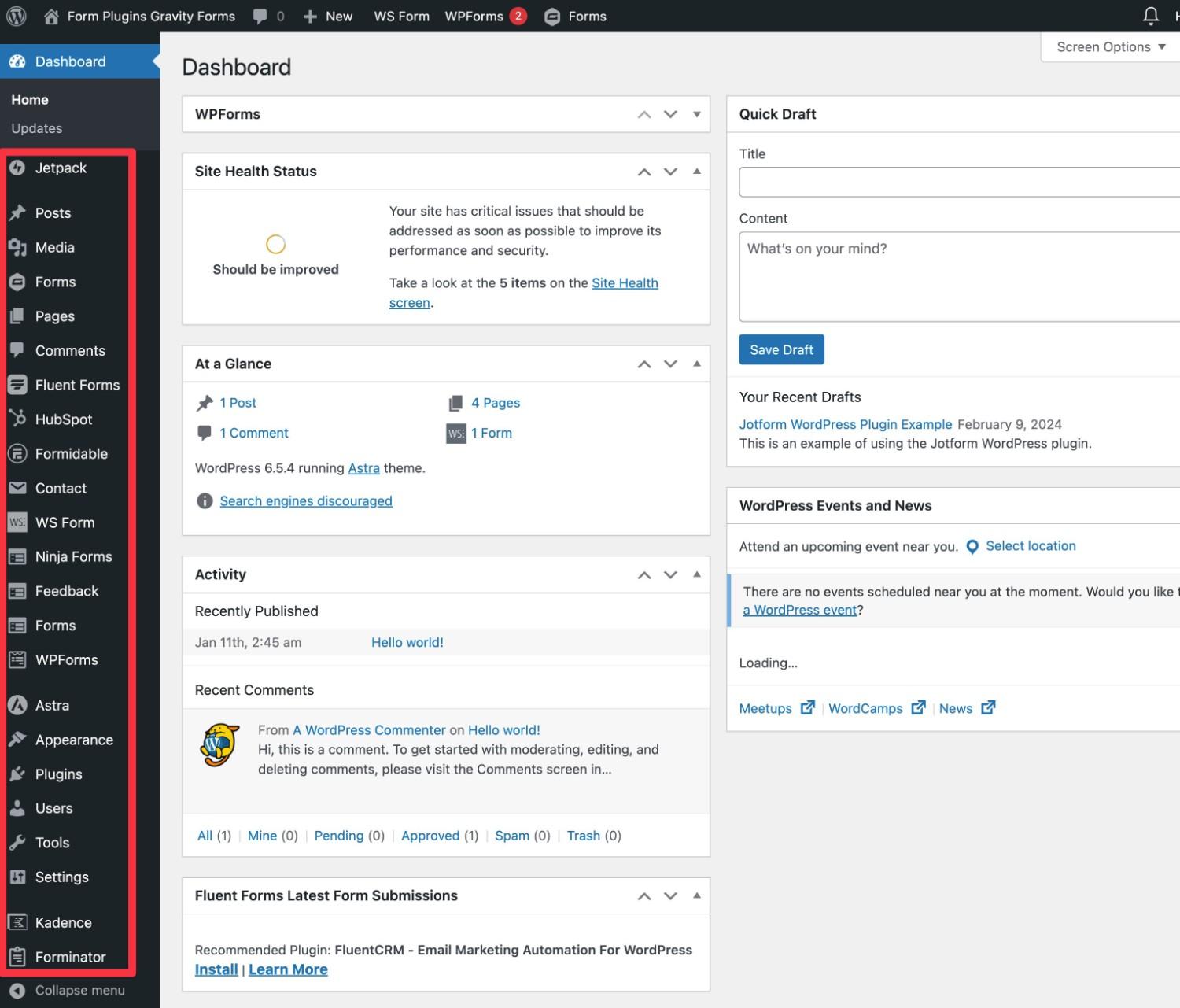
Exploring Alternatives: Should You Consider Other Form Plugins?
If you’ve found yourself frustrated with Contact Form 7 not sending emails, it might be time to consider alternatives. While Contact Form 7 is a popular choice for WordPress users, it isn’t the only option available. In fact, exploring other form plugins could save you valuable time and headaches in the long run.
Here are some compelling reasons to explore other form plugins:
- User-Friendly Interfaces: Some alternatives offer drag-and-drop builders, making it easier to create custom forms without any coding knowledge.
- Advanced Features: Many plugins come with built-in analytics, payment integrations, and conditional logic that can enhance your form’s functionality.
- Better Support: Depending on the plugin, you may find more responsive customer support, which can be invaluable when you encounter issues.
- Regular Updates: Some alternatives receive more consistent updates, which can help ensure compatibility with the latest versions of WordPress.
Let’s look at a few popular alternatives that you might consider:
| Plugin Name | Key Features | Pricing |
|---|---|---|
| WPForms | Drag-and-drop builder, templates, integrations | Free & Premium Plans |
| Gravity Forms | Conditional logic, multi-page forms, payment gateways | Starting at $59/year |
| Ninja Forms | Customizable fields, email notifications, add-ons | Free & Paid Add-Ons |
Switching to a different plugin doesn’t necessarily mean starting from scratch. Most plugins offer import options, allowing you to migrate your existing forms without losing data. It’s worth researching which alternative aligns best with your website’s specific needs.
Additionally, many of these plugins have robust communities and extensive documentation, which can help you troubleshoot issues more effectively than some of the more traditional options. You can often find tutorials, forums, and user guides that make the transition smoother.
Ultimately, while Contact Form 7 has its strengths, it may not meet every user’s needs. Exploring alternatives could lead to a more seamless experience and enhanced functionality for your website.

Getting Support from Your Hosting Provider: When to Ask for Help
When you’re facing issues with Contact Form 7 not sending emails, it can be frustrating, especially if you don’t know where to turn for help. Your hosting provider can be a valuable resource when troubleshooting these kinds of problems. Here are some key moments when reaching out for support might be the best course of action:
- Server-Side Issues: If you suspect that your server may be blocking outgoing emails, it’s time to get in touch. Hosting providers can check mail server settings and ensure that your emails are being sent correctly.
- Configuration Conflicts: Sometimes, there may be conflicts between your hosting environment and plugins. If you’ve tried all troubleshooting tips, your provider can help you diagnose if there’s an underlying configuration issue.
- Limitations on Email Sending: Many hosting plans have limits on the number of emails that can be sent in a given timeframe. If you’re hitting a cap, your provider can offer solutions, such as upgrading your plan or adjusting settings.
- Debugging Access Logs: Hosting providers have access to server logs that can reveal errors during email sending attempts. Requesting their help can provide insights that you might not have access to.
Before you reach out, it’s helpful to gather some information that will assist your hosting provider in diagnosing the problem faster:
| Information to Collect | Description |
|---|---|
| Plugin Version | The version of Contact Form 7 you are using. |
| WordPress Version | Your current WordPress version can affect compatibility. |
| Error Messages | Any specific error messages you’ve encountered. |
| Hosting Plan | Your current hosting plan type (shared, VPS, etc.). |
When you contact your hosting provider, be clear and concise about the issue. Describe all troubleshooting steps you’ve already taken, as this will help them understand your situation better and avoid redundant suggestions. This can lead to a quicker resolution.
Remember, your hosting provider is there to help you, but they can only do so if you communicate effectively. Don’t hesitate to ask questions about their email configurations and whether they have any recommendations for ensuring email deliverability.
In some cases, they may advise using third-party SMTP services to ensure reliable email sending. This can be an excellent solution if you continue to encounter problems. Providers like SendGrid, Mailgun, or even Gmail can offer enhanced deliverability features.

Best Practices for Email Management to Prevent Future Issues
Maintaining an organized email system is crucial for ensuring that communication flows smoothly, especially when using tools like Contact Form 7. By adopting effective email management practices, you can minimize the risk of future issues, including missed messages and confusion over responses.
Regularly Monitor Your Spam Folder: Emails from Contact Form 7 can sometimes end up in the spam folder. Make it a habit to check your spam or junk folder regularly to ensure that no important messages are lost. If you find legitimate emails there, be sure to mark them as “Not Spam” to train your email provider.
Use Filters and Folders: Organizing your inbox can significantly reduce email chaos. Create filters to automatically sort incoming emails from Contact Form 7 into designated folders. This way, you can quickly access important communications without sifting through unrelated messages.
Establish a Response Protocol: Set up a clear protocol for how quickly you aim to respond to inquiries. This not only helps with your workflow but also improves customer satisfaction. Consider creating templates for common responses to save time and ensure consistency.
Review Email Settings Periodically: Regularly check your email settings, including forwarding rules and filters. Make sure that your Contact Form 7 plugin is configured correctly, and that the email address fields are accurate. This checkup can help catch potential issues before they become significant problems.
Utilize Email Tracking Tools: Consider employing email tracking software to monitor whether your messages are being opened and read. This information can provide valuable insights into your communication effectiveness and help you adjust your strategies accordingly.
Backup Important Emails: Utilize tools or plugins that allow you to back up important emails regularly. This ensures that, should any issues arise, you have a record of vital communications. You can also set up email archiving systems to store and categorize old emails.
Evaluate Your Email Service Provider: If you consistently face issues with email delivery or management, it might be time to reassess your email service provider. Look for one that specializes in reliable delivery and robust management features that cater to your needs.
| Email Management Tips | Benefits |
|---|---|
| Check Spam Folder | Prevents missed emails |
| Create Filters | Improves organization |
| Set Response Protocol | Enhances efficiency |
| Review Settings | Ensures accurate configurations |
| Backup Emails | Secures important communications |

Final Thoughts: Keeping Your Contact Forms Running Smoothly in 2025
As we stride into 2025, maintaining the functionality of your contact forms is more crucial than ever. With increasing cyber threats and evolving email protocols, it’s essential to stay ahead of potential issues that could hinder communication with your audience.
Here are some key strategies to ensure your contact forms run smoothly:
- Regular Plugin Updates: Keep your Contact Form 7 plugin and related addons up-to-date. Developers frequently release updates to improve functionality and security.
- Check Spam Filters: Regularly monitor your spam folders. Sometimes, legitimate emails can be mistakenly caught by spam filters, leading to missed communications.
- Test Email Deliverability: Routinely test your forms by sending test messages. This will help confirm that emails are being sent and received correctly.
- Utilize SMTP Plugins: Consider using SMTP plugins like WP Mail SMTP or Easy WP SMTP. They help enhance email deliverability by using an authenticated email server.
In addition to these best practices, it’s beneficial to understand the underlying technology that powers your forms. Familiarize yourself with how email servers work and the role of DNS settings, especially SPF, DKIM, and DMARC records. Properly configuring these records can prevent your emails from being flagged or rejected.
If issues persist, don’t hesitate to explore alternative solutions. Sometimes a switch to a different contact form plugin may be warranted. Plugins such as WPForms or Ninja Forms offer robust features with excellent email capabilities that might better suit your needs.
Lastly, ensure that your hosting environment is optimized for performance. A slow server can delay email processing, leading to frustration for both you and your users. If your current hosting provider doesn’t meet your needs, consider upgrading to a more reliable service.
| Action | Frequency | Notes |
|---|---|---|
| Update Plugins | Monthly | Check for any compatibility issues after updates. |
| Test Deliverability | Bi-weekly | Send test messages to different email providers. |
| Monitor Spam | Weekly | Keep a log of missed communications. |
By implementing these strategies, you can ensure that your contact forms not only function seamlessly but also enhance your overall user experience. Proactively addressing potential issues will keep the lines of communication open, allowing you to focus on what truly matters — building relationships with your audience.
Frequently Asked Questions (FAQ)
Q&A: Contact Form 7 Not Sending Email? Here’s How to Fix It in 2025
Q1: Why is my Contact Form 7 not sending emails?
A1: Great question! If your Contact Form 7 isn’t sending emails, it could be due to several reasons. Common culprits include incorrect email settings, conflicts with other plugins, server issues, or even spam filters. Let’s dig into these one by one to help you pinpoint the problem!
Q2: How can I check if the email settings are correct?
A2: First things first, head to your Contact Form 7 settings. Ensure that the “To” email address is correctly entered. Sometimes a simple typo can be the problem! Also, double-check the ”From” address; it should match your domain to avoid being flagged as spam. You want your emails to look trustworthy!
Q3: What if I suspect a plugin conflict?
A3: Plugin conflicts can be sneaky! To check for this, you can temporarily disable other plugins one by one to see if that resolves the issue. If your emails start sending again after disabling a specific plugin, you’ve found the culprit! You might need to seek alternatives or check if there’s an update available for that plugin.
Q4: Are there specific server issues that could prevent emails from sending?
A4: Absolutely! Sometimes your hosting provider’s email settings can affect the sending of emails. It’s worth reaching out to them to ensure your server is configured to send emails properly. They can also assist you with any SMTP settings that might need tweaking.
Q5: How can I improve deliverability and avoid spam filters?
A5: To improve your email deliverability, consider implementing SMTP (Simple Mail Transfer Protocol) for your emails. Plugins like WP Mail SMTP can help you set this up easily. This change often resolves sending issues and helps ensure your messages land in the inbox rather than the spam folder. Trust us, it’s a game changer!
Q6: I’ve tried everything, and it’s still not working. What now?
A6: If you’ve followed all these steps and still find yourself in email limbo, it might be time to explore alternative form plugins. There are plenty of robust options out there that come with built-in email sending capabilities. However, before making the switch, you could also consult with a developer—they might find something you missed.
Q7: Any final tips to prevent this from happening in the future?
A7: Definitely! Regularly check your plugin updates and WordPress version, as compatibility issues can cause problems down the line. Also, keeping an eye on your hosting provider’s performance and email settings can save you a lot of headaches. And remember, backing up your site frequently ensures you can roll back if something goes awry!
Q8: Where can I find more help if I’m still stuck?
A8: If you’re still in a bind, consider visiting the Contact Form 7 support forum or looking for online communities related to WordPress. There’s a wealth of knowledge out there, and you’re not alone! Plus, you can always reach out to a professional for a more tailored solution.
Remember, fixing email issues with Contact Form 7 doesn’t have to be stressful. With a little patience and these troubleshooting tips, you’ll be back to collecting inquiries in no time!
In Retrospect
And there you have it! We’ve walked through the common reasons why your Contact Form 7 might not be sending emails and explored some effective solutions to get it working seamlessly again. Remember, a smooth communication channel is crucial for engaging with your audience, and resolving these issues will not only save you time but also enhance your website’s professionalism.
If you’ve tried these fixes and are still struggling, don’t hesitate to reach out to your hosting provider or consider consulting a web developer. They can offer tailored solutions that may just do the trick.
We hope this guide has empowered you to tackle any email woes head-on. Keep your forms functional and your communication flowing! If you found this article helpful, share it with fellow website owners, and let’s help everyone stay connected. Happy form building, and may your emails always land in the inbox!



